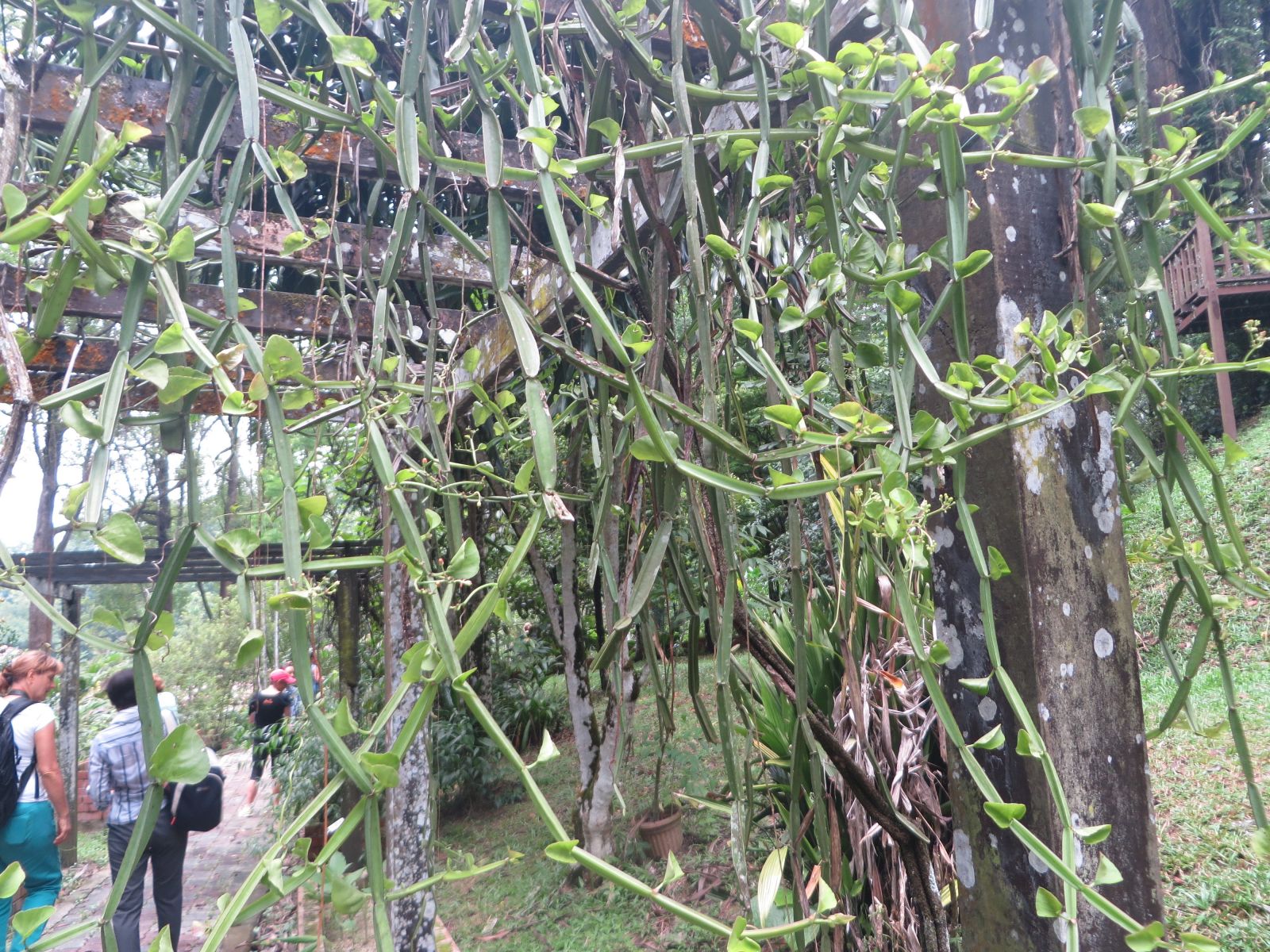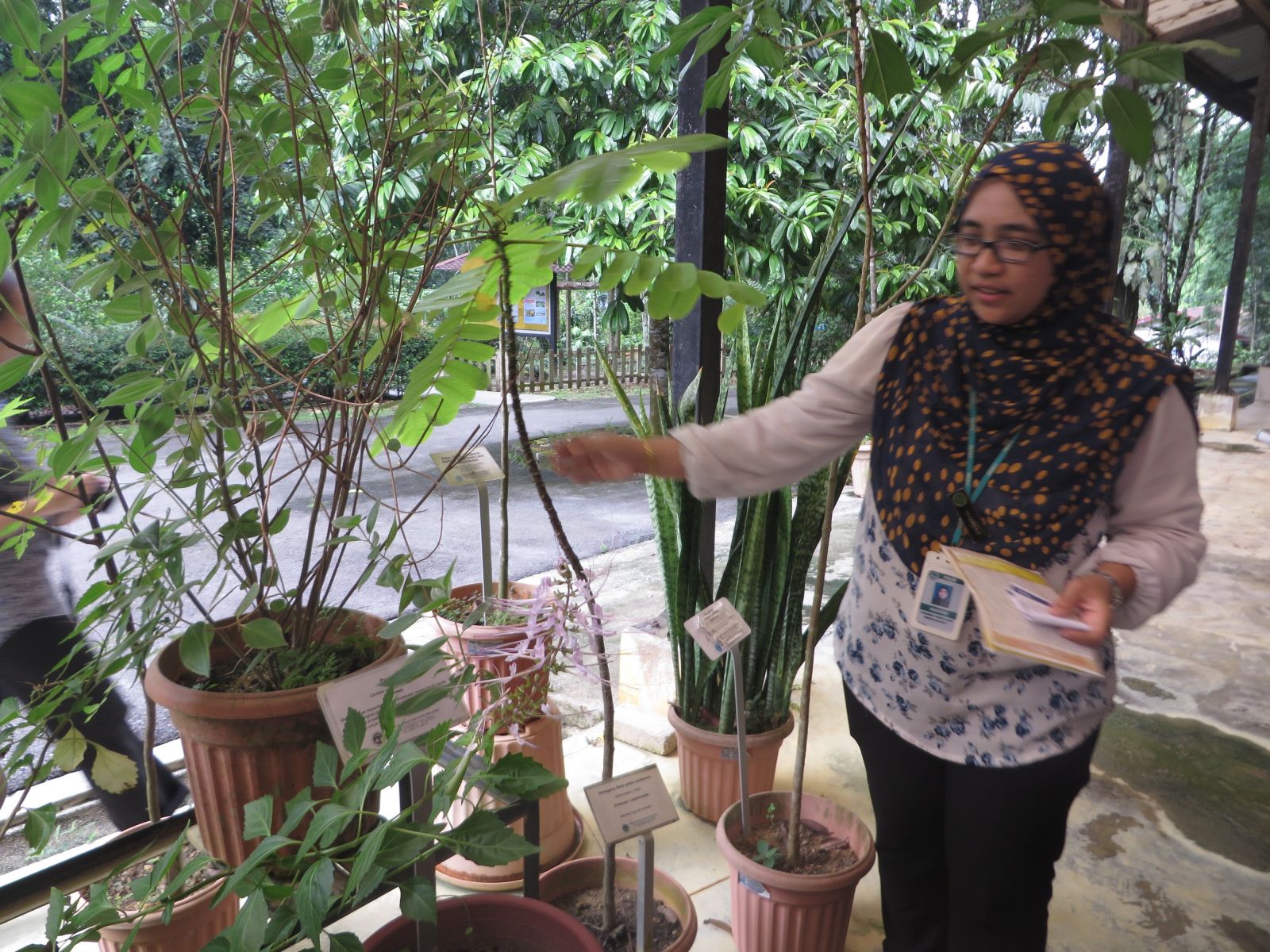| For those of us who have walked or cycled in FRIM it is easy to view it as a recreational forest area, without really knowing much about its history and purpose or even what grows there. So it was a great opportunity to learn something of FRIM and to be taken on a guided walk along one of the nature trails. | |
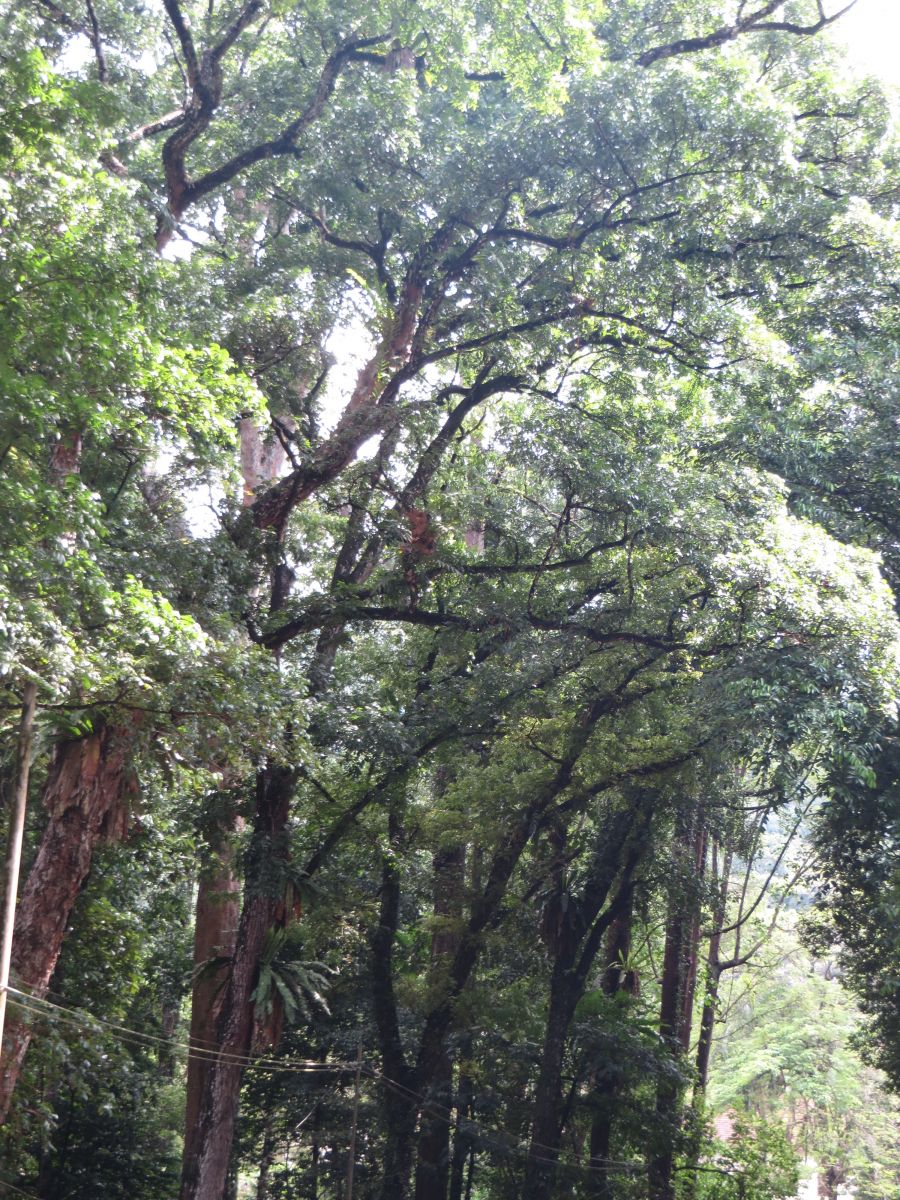 |
Such was the interest that what was to have been a short initial briefing turned out to be a much longer discussion. We discovered that FRIM was established in 1929 in what was then a derelict tin mining site in which the forest was not naturally regenerating, and that various species of indigenous and non-indigenous trees were introduced on a trial basis to test their suitability for timber plantations. The original research was focused on the uses of wood. Frim now has around 1.5m trees the majority of which have been planted. In 1985 FRIM became independent of the forestry department. In the absence of land title it has continually had to lobby against encroachment by development, roads etc. Unfortunately, over the years, the original 1000 Hectares has been reduced to 544. We were pleased to learn that FRIM eventually acquired title to the land in 2012, and is now in the process of applying for UNESCO world heritage site status. The adjacent hills, although not part of FRIM’s land, are still forested, and whilst not legally protected, hopefully, with public support, they can remain that way. |
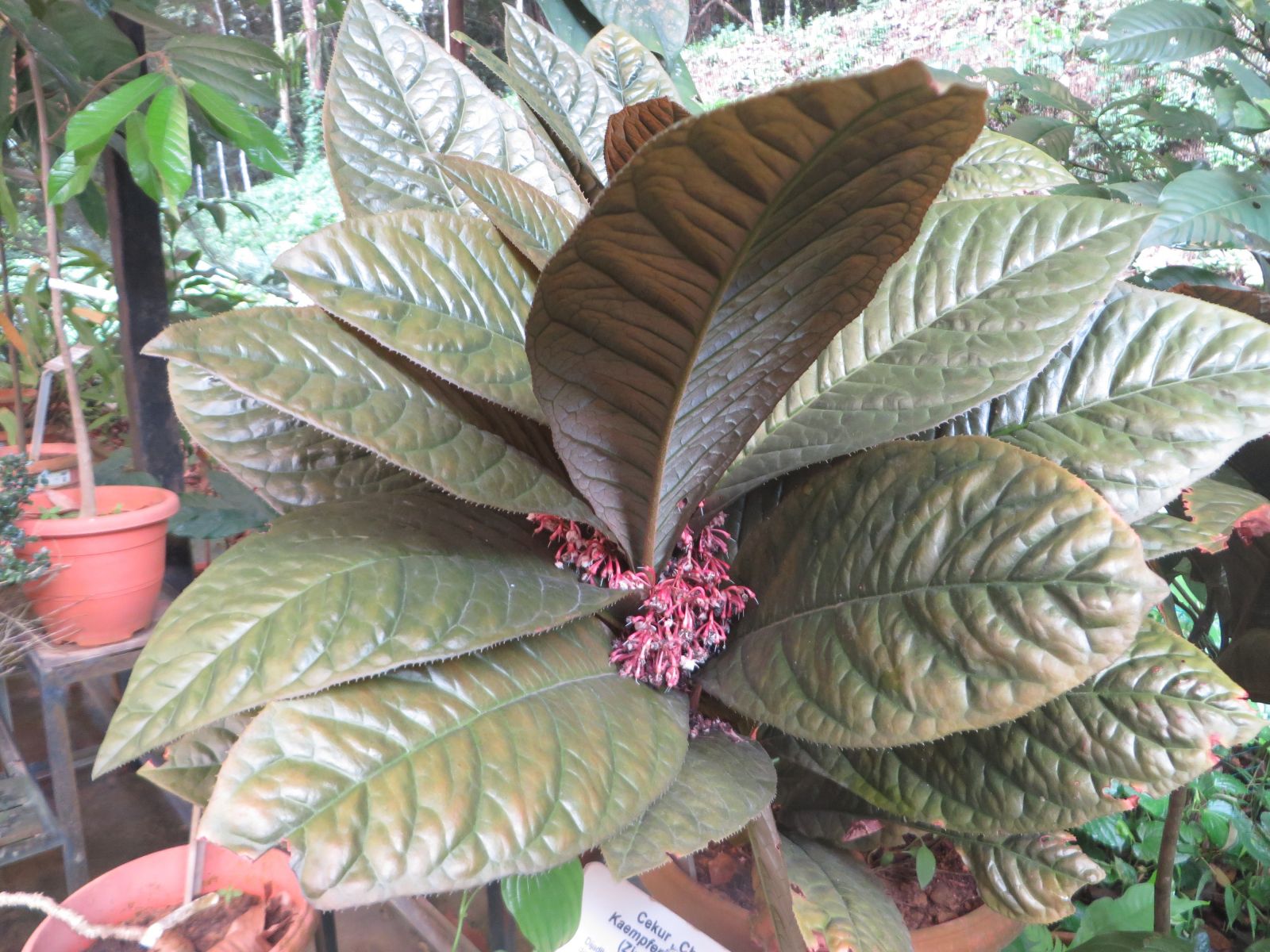 Fatimah plant used to treat women's ailments Fatimah plant used to treat women's ailments |
Whilst research was originally related to the timber industry, these days it covers bamboo, plant species, insects, fungus, biotechnology, medical herbs and forest products, including DNA tracking of illegal logging, classification of species as endangered or critical in any particular forest, and identification of high conservation value forests. Research findings are passed to the forestry department. However it is entirely up to them how they use the information. As one can imagine this generated a number of questions and considerable discussion. We learned that whilst FRIM can undertake research, they are limited as far as product commercialization is concerned. |
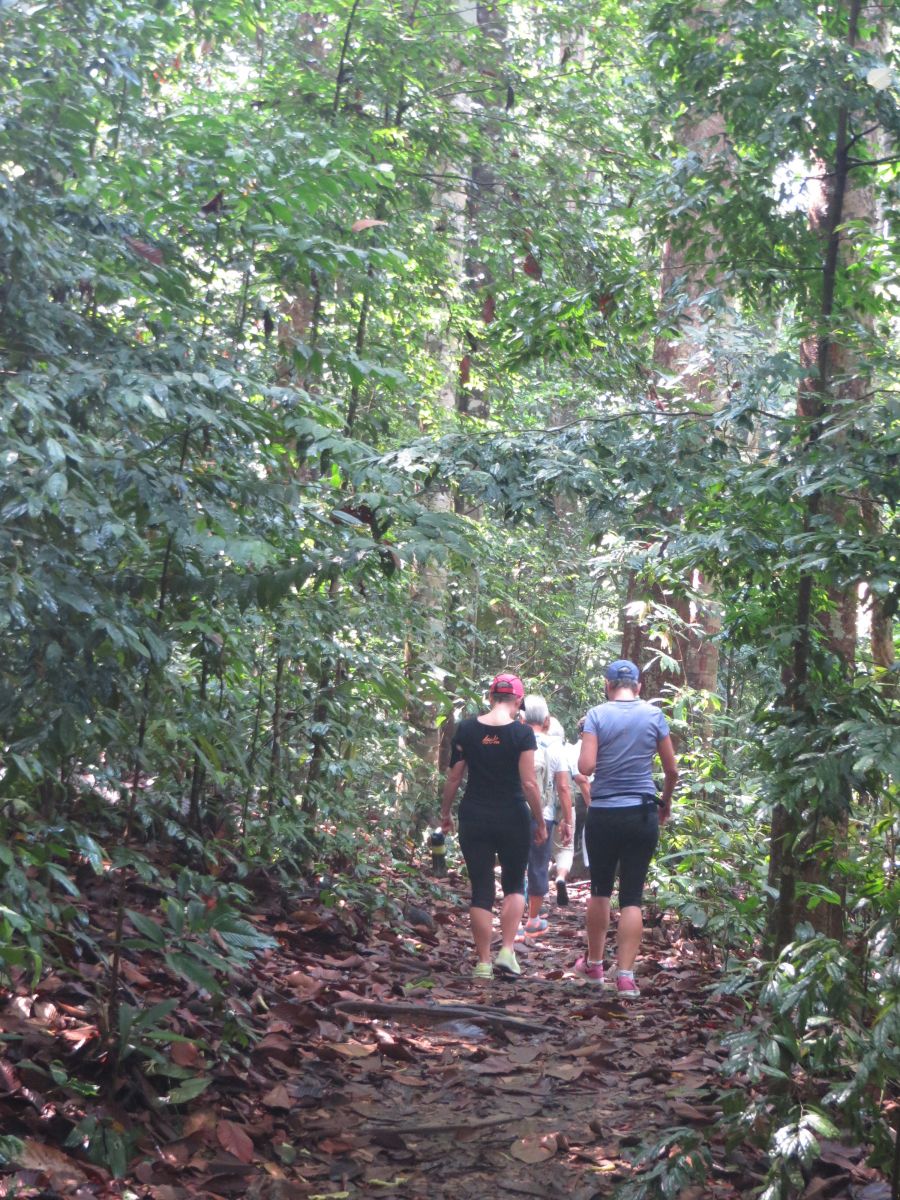 |
And then off to the forest. On the way we passed some experimental ponds where combinations of plant species, are being trialed as natural filters to clean up polluted water, each taking up different pollutants as nutrient. Small pumps are powered by solar energy.
The nature walk along the Salleh trail, which was covered in leaf mulch and criss-crossed with roots, was a real education. For example, we learned that the young leaves of the Kolim tree smell and taste of garlic, whilst its wood, being a medium hard wood, is ideal for furniture, and has also been used for railway sleepers. The leaves of the Kapur tree smell of camphor, and the resin is used to produce products such as tiger balm. We also saw a good example of how long those trees with very hard wood take to grow. A Ghengal tree planted in 1950 was still relatively short and spindly. Whilst the original planting was of timber trees, wild fruit trees are now also being planted as well to increase the biodiversity needed to support a broader range of wild life. |
|
Tulang Tulang plant good for curing bone fractures
|
And then, walking along the road to the ethno-botanical garden, we learned that the avenue of trees lining it are South American mahogany; also that since tropical forest is evergreen and does not have a distinct growing season, the trees have no rings from which their age can be determined. In any event the core of the trees tend to rot away with age. Since that is the oldest part of the tree the cells die naturally and are not replaced.
In the ethno botanic garden some 200 species of medicinal and aromatic plants used by the various ethnic communities in peninsular Malaysia are cultivated and conserved. Following an informative talk illustrated with various examples, it was intriguing to look around the display of pot plants and see from the labels what condition each of them was used to treat. Out in the garden, as well as a number of other plants, there was an overhead trellis of Tulang Tulang used for the treatment of bone fractures, various types of cinnamon tree, and a vale of various types of ginger plant. |
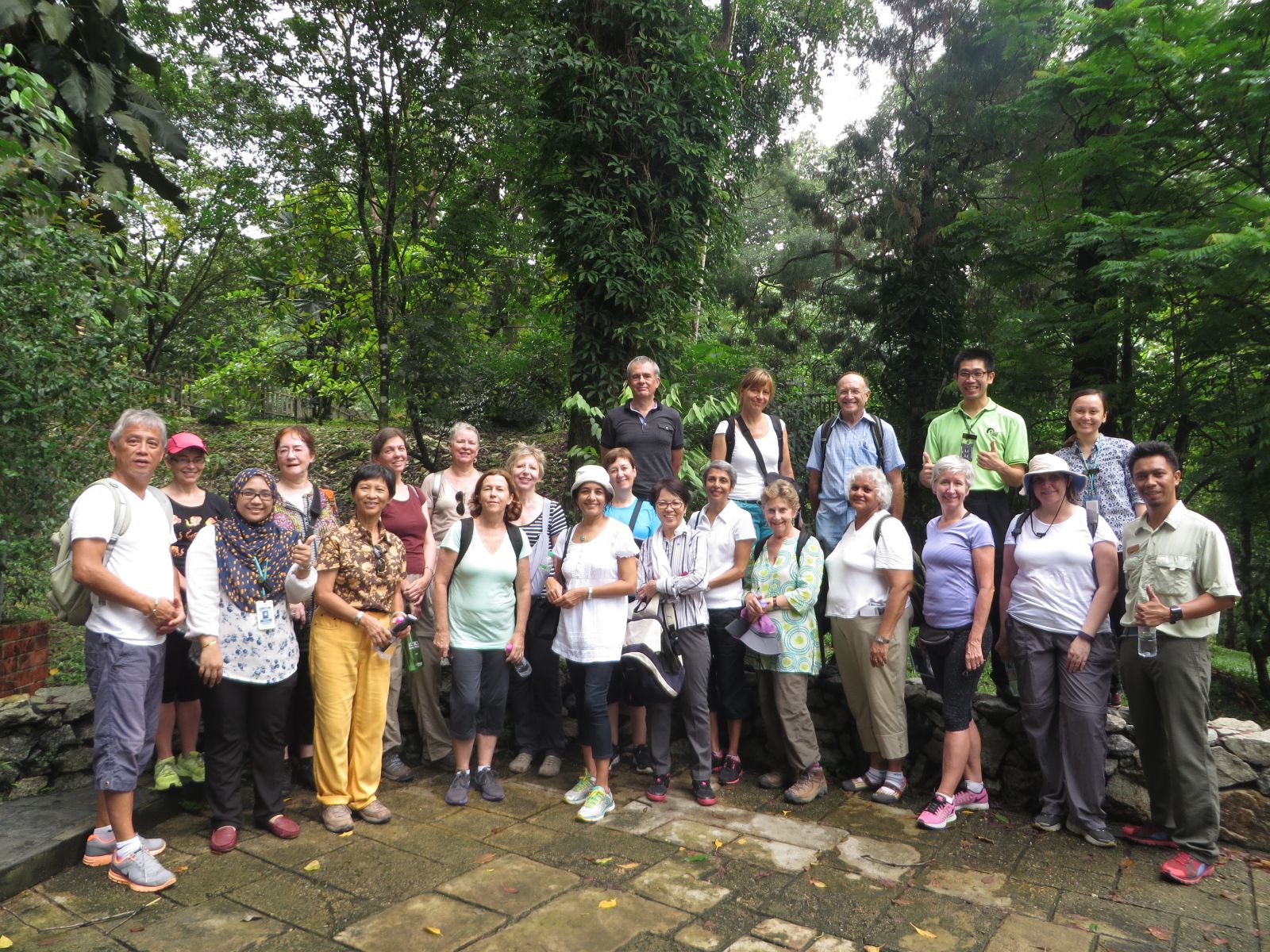 |
And then it was already time for lunch. So the research gallery will have to wait for another occasion. All in all it was a fascinating day. Our thanks to Lim for an informative discussion, Edi for educating us in the field, Madiha for looking after us and the staff at the ethno botanical garden for an interesting talk. It was refreshing to find people at FRIM who are committed to protecting the forest. We should do what we can to speak up for them, so that FRIM and the adjacent forest can remain a haven for the future.
|
| Written by Rob Rosenberg with photographs by Margo Rosenberg | |





